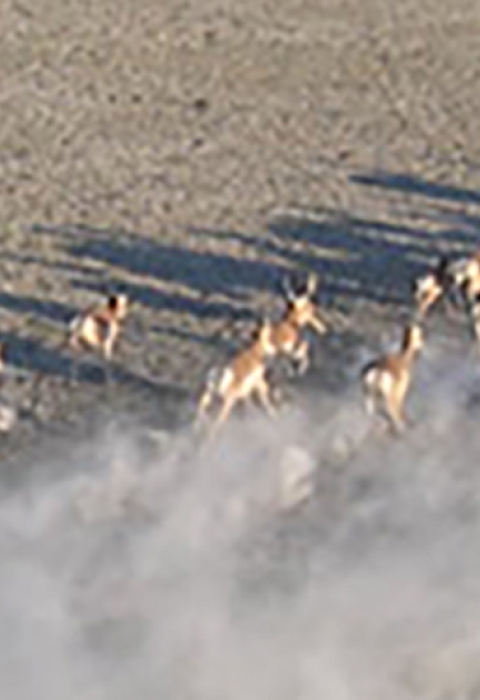LAKEVIEW, Ore. – The U.S. Fish and Wildlife Service is releasing a draft environmental impact statement (EIS) for a management plan to address a significant decline in the California bighorn sheep population on Hart Mountain National Antelope Refuge. The Service is opening a 45-day public comment period on the draft EIS.
The bighorn sheep population on the refuge has declined by 67% in four years, dropping from 149 sheep in 2017 to 48 in 2020. This trend puts the population at risk of extirpation without management intervention.
The population decline appears to have been driven by high cougar predation and declining habitat quality due to juniper encroachment and invasive plants. Of the 19 sheep radio-collared on the refuge in January 2019, 10 have died. Seven of those deaths are attributed to cougar predation.
The Service is partnering with the Oregon Department of Fish and Wildlife (ODFW) to develop the bighorn sheep management plan for the refuge.
“We’re extremely concerned about the steep decline in the population of bighorn sheep on the refuge,” said Robyn Thorson, Columbia-Pacific Northwest Regional Director for the Service. “The Service and ODFW are working together to identify options that enable us to avoid extirpation while implementing long-term solutions for habitat improvement. We are seeking public input to help us achieve our goals of saving this population of bighorn sheep.”
The draft management plan and EIS is proposing a range of alternatives, including a preferred alternative. These alternatives are:
- No action: The bighorn sheep herd on the refuge would continue to be managed as it has been in the past. This is considered the baseline, or status quo.
- Bighorn Sheep Habitat Improvement: This would incorporate existing measures plus add habitat management activities specifically targeted to benefit bighorn sheep. Habitat management would focus on the herd range and address life history needs to expand and enhance habitat conditions.
- Population Management Only: The Service would temporarily and strategically reduce predation to allow the herd size to recover to a sustainable level. Recent data have identified cougars as the primary and significant predator on adult bighorn sheep on the refuge.
- Comprehensive Integrated Management (Preferred alternative): This would be a combination of management actions proposed in the first three alternatives. An integrated approach provides a full range of management strategies to adaptively manage the bighorn sheep herd in the short-term while providing time to identify and correct habitat issues that may take decades to resolve.
Bighorn sheep were extirpated from Oregon by the early 1900s due to disease and unregulated hunting. The first successful reintroduction of this native species occurred at Hart Mountain in 1954, when 20 California bighorn sheep from British Columbia were successfully released. Hart Mountain’s population served as an important source population for bighorn sheep transplants to other parts of Oregon.
“Oregon’s bighorn sheep reintroduction efforts actually began at Hart Mountain, when bighorn sheep were successfully re-introduced in 1954 with 20 sheep translocated to the refuge,” said Dr. Doug Cottam, Wildlife Division Administrator for ODFW. “The decline in number of bighorn sheep counted on the refuge is cause for alarm considering that the species is native to the refuge.”
The Service is requesting comments from the public on the draft EIS to inform the final plan. Comments will be accepted through June 14, 2021. People can provide comments by email at Sheldon-Hart@fws.gov or by U.S. Mail addressed to Project Leader, Sheldon-Hart Mountain National Wildlife Refuge Complex, P.O. Box 111, Lakeview, OR 97630. Please include “Hart Mountain Bighorn Sheep Plan” in the subject line.
The draft EIS and additional information on the refuge and the sheep population can be found here: https://www.fws.gov/refuge/hart-mountain-national-antelope/what-we-do
Photos of California bighorn sheep and Hart Mountain National Antelope Refuge can be found here: https://www.flickr.com/photos/usfwspacific/albums/72157719065702692/with/51147249619/


